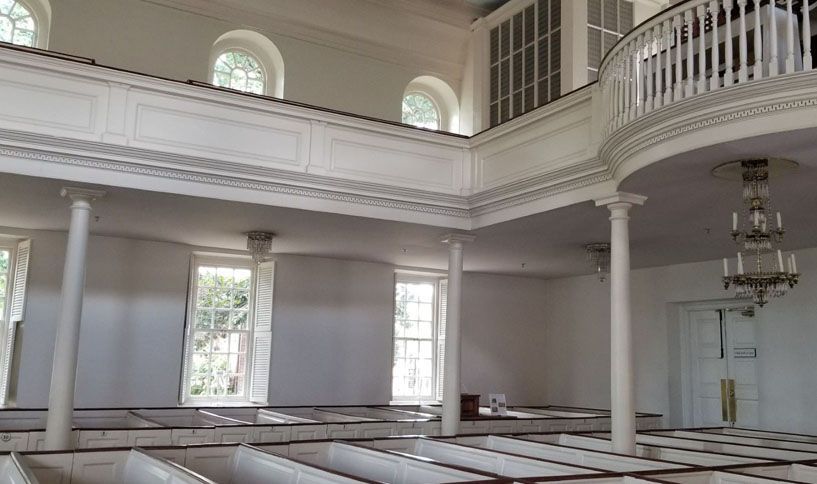
Inside the Church
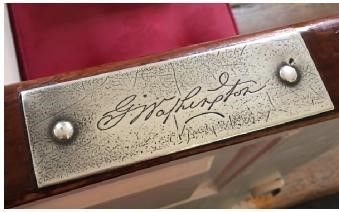
George Washington Pew
When the Vestry of the Fairfax Parish received the completed church from the builder on February 27, 1773, it sold ten box pews to the highest bidders to help pay for the last stage of construction. George Washington purchased his pew for £36.10 (over $6,700 in 2023 dollars), the highest price paid.
Washington was 41 years old when construction was completed on the church he called the “Church at Alexandria”. He attended services numerous times over the next two years before receiving his commission as Commander-in-Chief of the Continental Army in 1775, which kept him away from Alexandria for eight years.
While residing at Mount Vernon at the conclusion of the Revolutionary War (1783-1789) and then again after his Presidency (1797-1799), Washington attended services at Christ Church when he was in Alexandria for business or pleasure or, according to his adopted granddaughter Nelly Custis Lewis, “when the weather and roads permitted a ride of ten miles.” During his Presidency (1789-1797) when he was residing in Philadelphia, he attended a July 4, 1793 service held at Christ Church as part of Alexandria’s July 4th festivities.
His last recorded attendance at a Christ Church service was on November 17, 1799, less than a month before his death on December 14.
Today, when newcomers attend a Christ Church service, they often are seated in Washington’s pew as a gesture of welcome. All visitors are invited to sit in the pew during the hours that the church is open for tours, creating a personal connection to our nation’s first President.
Roosevelt and Churchill Pew Markers
INSCRIPTION:
National Day of Prayer January 1, 1942
Franklin D. Roosevelt – Winston S. Churchill – Eleanor Roosevelt
On New Year’s Day 1942, during the dark days after the Japanese attack on Pearl Harbor, praying for peace was the first order of business. In dreary weather, President Franklin D. Roosevelt, First Lady Eleanor Roosevelt, and British Prime Minister Winston Churchill motored from the White House to worship at historic Christ Church. Roosevelt had appointed January 1 a National Day of Prayer during Churchill’s White House visit in the aftermath of Pearl Harbor, and he chose George Washington’s church to observe it. These markers are attached to the back support of Washington’s pew where the Roosevelts and Churchill sat on this historic day of worship.
Many other U.S. Presidents besides George Washington and Franklin D. Roosevelt have worshipped at Christ Church, including William Howard Taft, Calvin Coolidge, Herbert Hoover, Harry Truman, Dwight Eisenhower, Lyndon Baines Johnson, Gerald Ford, Jimmy Carter, Ronald Reagan, George H.W. Bush, and George W. Bush

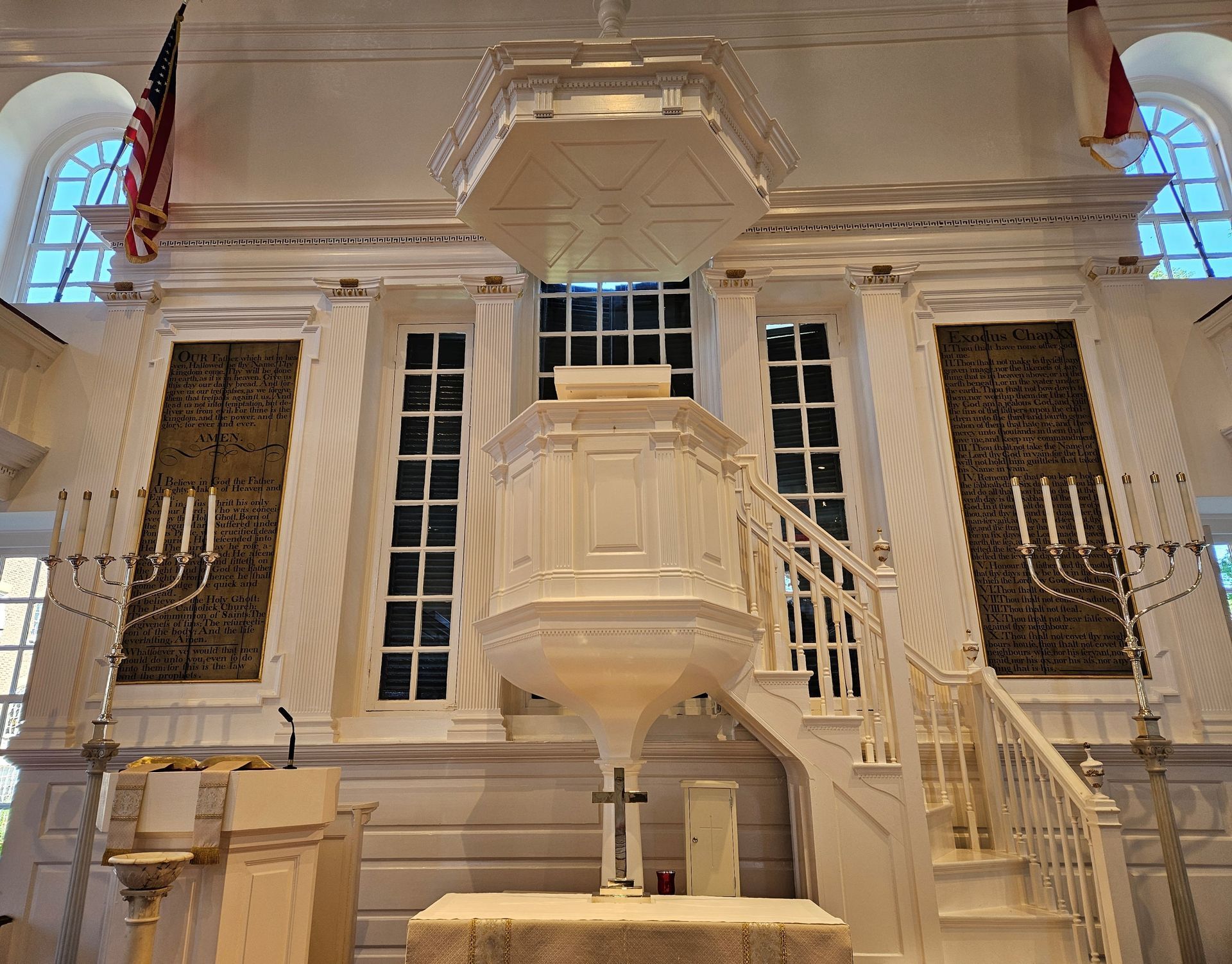
“Wine Glass” Pulpit
No record remains of the exact location and design of the earliest pulpit. Church records indicate that the pulpit used during the first half of the 19th century was removed in 1867 during a renovation of the church. The current “Wine Glass” pulpit, so named because it stands atop a slender central column that gives it the appearance of a top-heavy wine glass, was installed during a 1890s restoration of Christ Church. Above the pulpit is a canopy known as a sounding board to help project the preacher's voice to the congregation, which would have been especially useful before the invention of modern audio equipment. An 1891 Alexandria Gazette article noting that “the old sounding board was found” during the 1890s restoration indicates that a wine glass pulpit and sounding board may have been used prior to the 1867 renovation.
The pulpit traditionally is reserved for clergy, and the sermon at Sunday services still is given from it today. To the left of the pulpit is a lectern that is used by lay persons for other Scripture lessons and for announcements.
The Commandment Tablets
The Church of England’s Canon Law LXXXII of 1604 required that "the Ten Commandments be set up on the East end of every Church and Chapel, where the people may best see and read the same, and other chosen sentences written upon the walls of the said Churches and Chapels, in places convenient."
The tablets were common in English Anglican churches by the early 1700s and in many churches in colonial America. In Christ Church, the Ten Commandments are displayed to the right of the pulpit as one faces it, and the Fairfax Parish’s “other chosen sentences” required under the 1604 Canon Law (the Lord’s Prayer, Apostle’s Creed, and the Golden Rule) are displayed to the left of the pulpit.
The words on the Commandment Tablets were hand-lettered on to wood by the architect of the church as it was being built. Legend has it that the Tablets were white upon completion, and that they have mellowed over time into the soft brown color seen today. The vertical line in both tablets is a result of a split in the wood panels used to form the tablets.
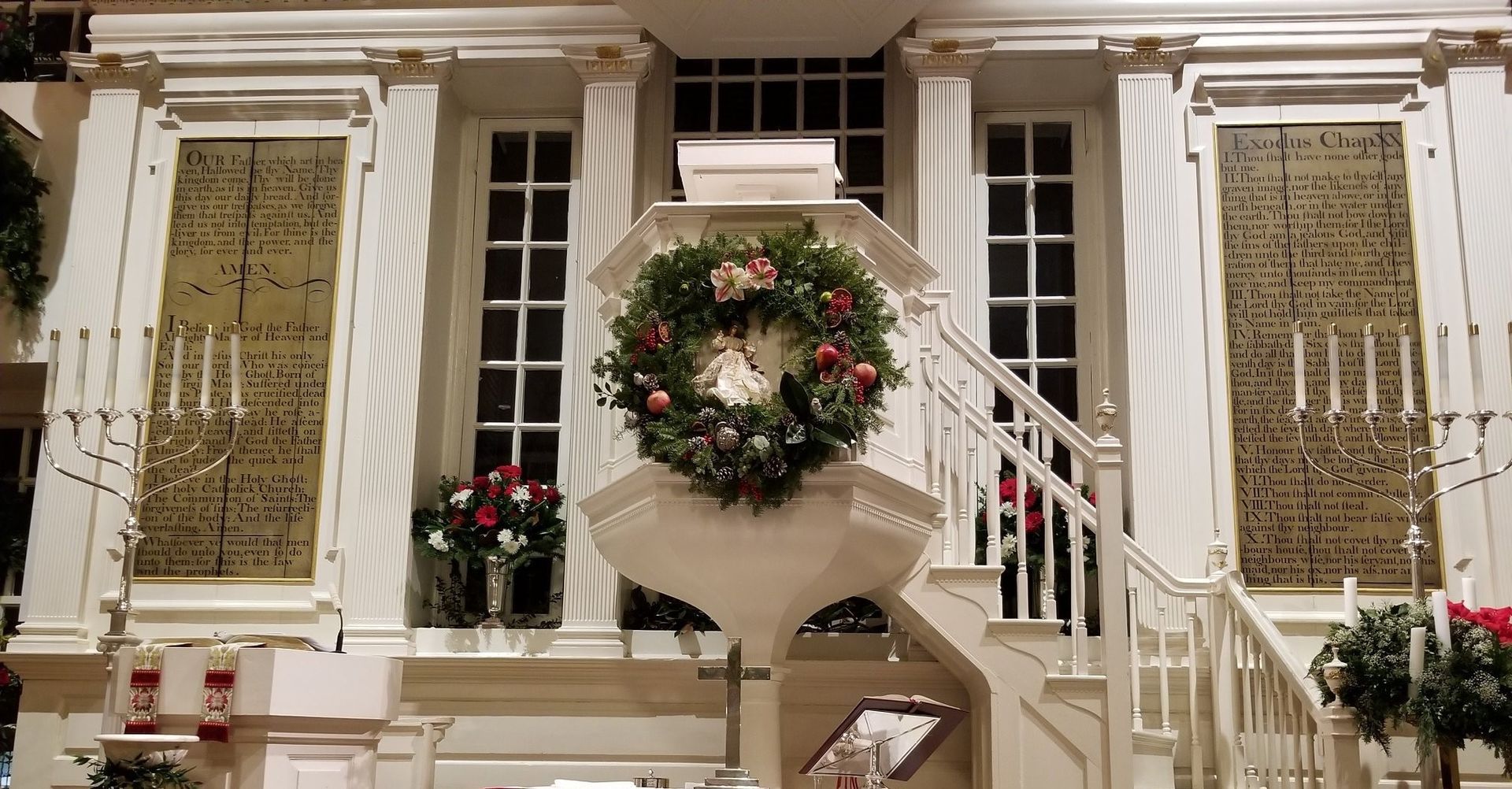
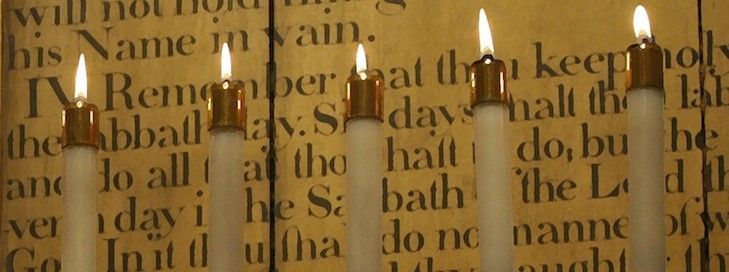
Candelabras
INSCRIPTION:
Dedicated to the Glory of God and in memory of - Aneida M. and Wm. H. Browne - by their daughter Mrs. Hazel Browne Douglass - and Granddaughter - Helen Kathleen Douglass - April 9, 1939
This candelabra, with only seven candlesticks, differs from the usual nine stick candelabra found in the Jewish celebration of Hanukkah.
The inscription on the back of the candalabras show that they were given to the church in 1939 by Mrs. Hazel Browne Douglass and her granddaughter in 1939, in remembrance of Aneida M. and Wm. H. Browne.
In the waning light of a 5:00 p.m. service in the fall and winter, there can be no more aesthetic and spiritual beauty than when these candles are lit, and cast a warm glow upon the golden tablets on the wall behind them.
Baptismal Font
INSCRIPTION:
To the Glory of God and in Remembrance of John and Susannah Pearce Alexander
Who gave the land upon which the church stands
Presented by their great, great, great Granddaughter Helen Chapman Calvert
The marble baptismal font, which sits on top of a lightly decorated pedestal, serves as the receptacle for the perfectly fitted silver liner. In it, the baptismal water is sprinkled or poured lightly over a candidate for Baptism (usually a young child). This water ritual is a central part of the Sacrament of Baptism, which is the Christian initiation into the spiritual membership of a church. It is the primary Sacrament required of people seeking to join our communion of Christian believers.
The baptismal font was purchased by the church from James Croudhill in 1818. By the end of the 19th century, Christ Church had become a popular historical place of interest, and the font was damaged by tourists in 1897. The silver baptismal liner that covers the cracks in the marble resulting from the breakage was donated by Helen Chapman Calvert, a descendant of the Alexander family for whom the city of Alexandria was named and who donated the land on which Christ Church was built. You only see this beautiful silver lining during Baptisms.
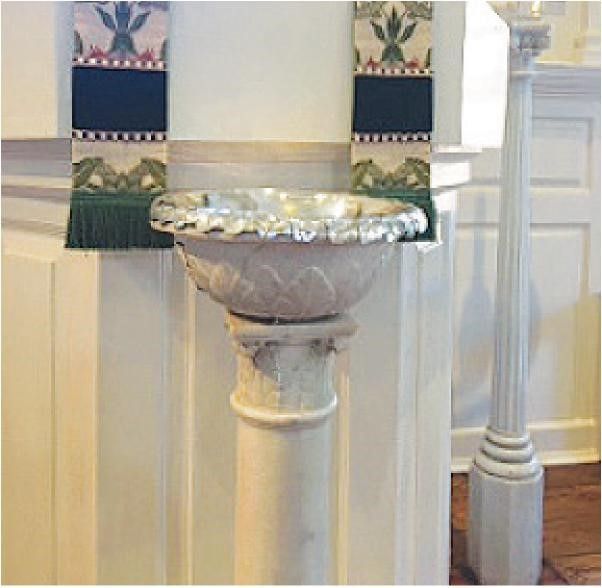
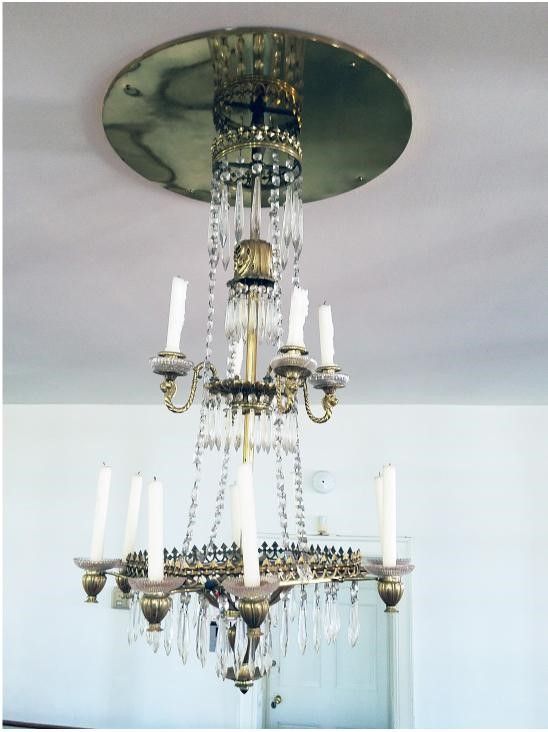
1817 Chandelier
The cut-glass chandelier that now hangs under the gallery at the rear of the church was purchased in 1817 by the vestry for $140. It hung in the center of the church until the installation of gas lighting in a church restoration after the Civil War, and was restored and returned in an 1891 restoration. When the church installed the current electrical Belgian lighting in 1923, the chandelier was moved to its current location.
Imagine the interior of the church in the 19th century, lit only by reflections of candle light from the chandelier, and individual window candles, safely ensconced in their hurricane lamps.
Robert E. Lee Pew
Henry “Light-Horse Harry” Lee, George Washington’s friend and cavalry officer in the Revolutionary War, moved his family (including three-year-old Robert) across the street from the church in 1810. The Episcopalian family began to worship at the church, which was the parish of other members of the Lee family. Robert married fellow parishioner Mary Custis (Martha Washington’s great-granddaughter) in 1931, and the Robert E. Lee family were frequent worshipers at Christ Church up to the start of the Civil War. They sat in the balcony during the early years of their marriage, and moved to a pew across the aisle from the Washington pew in 1858.
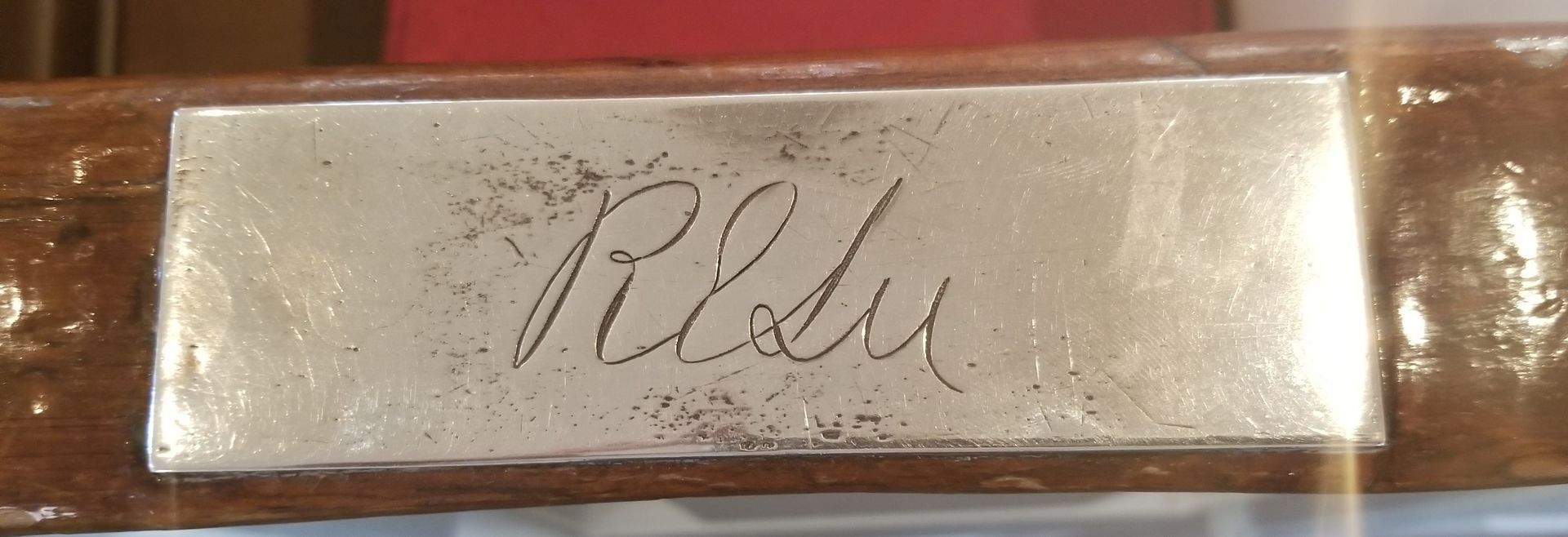
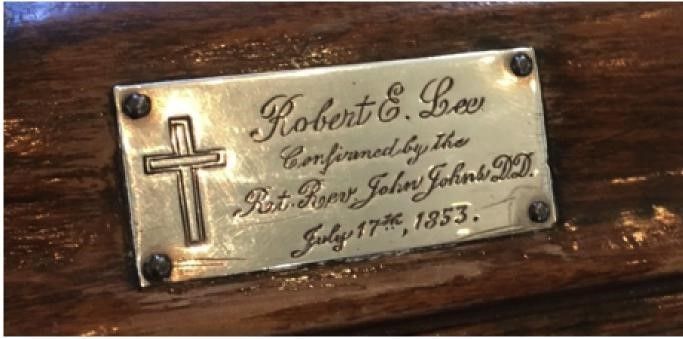
Robert P. Lee Confirmation Marker
INSCRIPTION:
Robert E. Lee
Confirmed by the Rt. Rev. John Johns D.D., July 17, 1853.
Robert E. Lee and his daughters Annie and Mary knelt here at the communion rail to be confirmed in 1853. Although Lee had worshipped at the church since the age of three or four, he waited until he was 46 years old before confirming the promises made on his behalf at the time of his baptism.
Lee left no personal account on why he waited so long for his confirmation. Some historians believe that he was prompted by a deep religious experience in the winter of 1852-1853 after the death of his mother-in-law, Christ Church parishioner Mary Fitzhugh Custis, whom he grieved. He was Superintendent of West Point at the time of his confirmation.
This plate was attached to the altar rail in January 1919.
The William G. Cazenove Free Pew for Strangers
Before the American Revolution, the Church of England was the established church in colonial Virginia, meaning that colonists were legally required to financially support Anglican churches through taxes. After the Virginia Assembly passed the 1786 Virginia Statute for Establishing Religious Freedom which separated church from state, Anglican churches lost this tax support, and the church developed a pew rental system to sustain both the health of the building and the salaries of clergy and staff. The ability to rent one’s pew passed on through a family’s generations as long as payments were made.
The 1897 will of Anthony Charles Cazenove contained a legacy of $1,500 to Christ Church on condition that his family pew be forever constituted a free pew for the use of strangers in memory of his father, William Gardner Cazenove. The church vestry accepted the legacy of $1,500 in 1899 and declared that the Cazenove family pew would henceforth “be a free pew forever for the benefit of strangers coming to worship there, and to be always known and Marked as the William G. Cazenove free pew for Strangers.”
By 1917, the practice of renting pews had ended. Today, Christ Church welcomes everyone to sit in any of our pews.

New Paragraph
